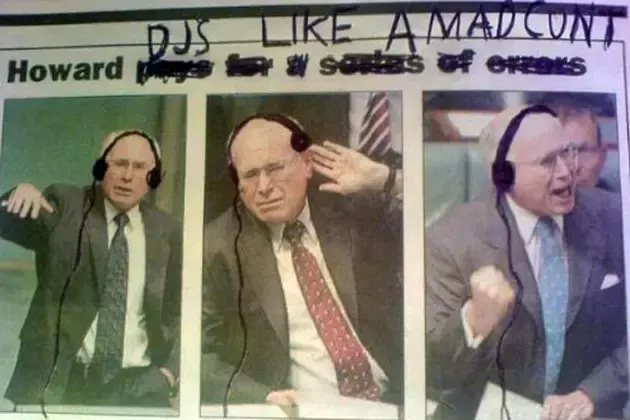

Is Australia supporting one side of that war?Providing military equipment to one side? Are we trading with then?
I don’t know the answers, but if we are then I think we should also stop doing that.


Is Australia supporting one side of that war?Providing military equipment to one side? Are we trading with then?
I don’t know the answers, but if we are then I think we should also stop doing that.


“Our (winning!) campaign calling on payment processors including Visa and Mastercard to stop processing payments for rape and incest games available on Steam and other platforms has received global media attention.”
Well that is not what I was expecting to find on their site…
I’m not sure if it was what you are going for, but one explanation is that the ever accessible dopamine hijacking bullshit spreading machine of social media is diluting the fuck out of parents influence.
Couple this with a new requirement of dual incomes to subsist.
So yes parents do have a role, and they are being squeezed out of it like a zit. The outcomes suck for everyone. I don’t know why it’s not mentioned, likely because it’s hard to ignore the egregious impacts of unfettered capitalism if you start asking these questions.


Bael422 slams newsmedia for child-like vocabulary in scathing comment.


It’s hard to see it as anything other than the gamboling lobby controlling it politics. Albo is practicing ‘sensible politics’ which seems to mean ensuring corporate interests get the final say.
Cosmic microwave background radiation?
Matter and energy are equivalent after all.


I have to ask what you mean by fight against entropy?
Are you referring to the apparent paradox that complex life goes against the idea of entropy tending to increase?
It is, however, only apparent. Assembleages, as you call them, are just possible expressions of energy in the system. Like if you put energy into a double pendulum in can swing in complex patterns.
When you make any local reduction to entropy, by assembling order, it necessarily comes at the cost of increased ‘global’ entropy. That’s the meaning of the second law.
Nobody can fight against it, without reversing the direction of time.


You’re taking the wrong path, I see some things that you may not be considering.
Friendships don’t need to be defined by beginnings and ends. The gentlest way to cool a friendship is to spend less time with them.
Spending time within someone you find attractive doesn’t screw with your psyche. An internal cycle of hope and rejection does.
She already rejected you, you said it in the post. ‘Its not the right time’ is not an invitation to wait, it’s a gentle no (and it’s much worse approach than just saying no). Accept it and move on. If your thoughts wander to oh but maybe we could be together if I do something - remind yourself she said no. If you need further clarification ask again.
Threatening to end the friendship for a romantic relationship has zero good outcomes. If you can’t handle the rejection or don’t want to be her friend, then stop making time to see her. The only reason to explain that it is ‘because you want more’, is the thought that it will change her mind - remember emotional manipulation is gross and rapey but don’t worry you haven’t done it yet. Thinking about things isn’t doing them.
Also, you sound like a young man, so I just want to affirm that the drive to have sex can be wild strong, and make clear thinking hard. It’s okay, just remember you don’t want be with someone who you can get to agree to a relationship with you, you want to be with someone who wants to be in a relationship with you. Everyone is worth that much.
Yeh I don’t think Nobara is beginner friendly. I’d say my experience was the same as yours. Difficulties with lots of things, but could find solutions. Given it wasn’t my primary PC, and I don’t have time for that - gone for mint (needed some stale stale kernl)
Sounds more like a hardware issue. Screen black, like it goes off no output? Any visual glitching first? Desktop doesn’t respond? How do you know, is it sounds stop or make funny noise?
Search inside the system? Open taps? Not sure what this means
Can you restart the computer? Or will the distro not boot after this?
And this doesn’t happen in Windows?


I found this
This article is by the person who commissioned the poll and contains a link to what I assume the text of the poll was.
It survey 1000 respondents, but I’m not sure if hard any checks built it to check how representative. It doesn’t look like it’s going to be peer reviewed, it was commissioned by a history professor. But he makes some interesting arguments in the above article.
But did it ever capture headlines…
Makes sense if you’re paying extra for the colour


"This initiative calls to require publishers that sell or license videogames to consumers in the European Union (or related features and assets sold for videogames they operate) to leave said videogames in a functional (playable) state.
Specifically, the initiative seeks to prevent the remote disabling of videogames by the publishers, before providing reasonable means to continue functioning of said videogames without the involvement from the side of the publisher.
The initiative does not seek to acquire ownership of said videogames, associated intellectual rights or monetization rights, neither does it expect the publisher to provide resources for the said videogame once they discontinue it while leaving it in a reasonably functional (playable) state."
Right there in black and white, one click away. There is no attempt to force companies to keep servers running, if you have a single player game then it can’t remotely destroyed by requiring a server connection that gets taken down without a patch to remove that requirement.
Ohhhhhh, that explains a number of past relationships for me.


Not OP, but i am here because it’s addictive.
Ostensibly, I came to be informed about special interest areas… But that’s not a fair representation of how my time is spent.
That’s a very rose tinted glasses view of the local impact a federal candidate has, vs the impact of the elected government.
Ignore the word punish. If you don’t like lib/nat wreck and sell plans, don’t vote national no matter what promise they makes to the electorate - it’s highly unlikely they have the ability to hold up their end of the bargain as it’ll be a party decision.
But bro we just need a bigger training set bro, just more bit of data and it’ll become real intelligence.